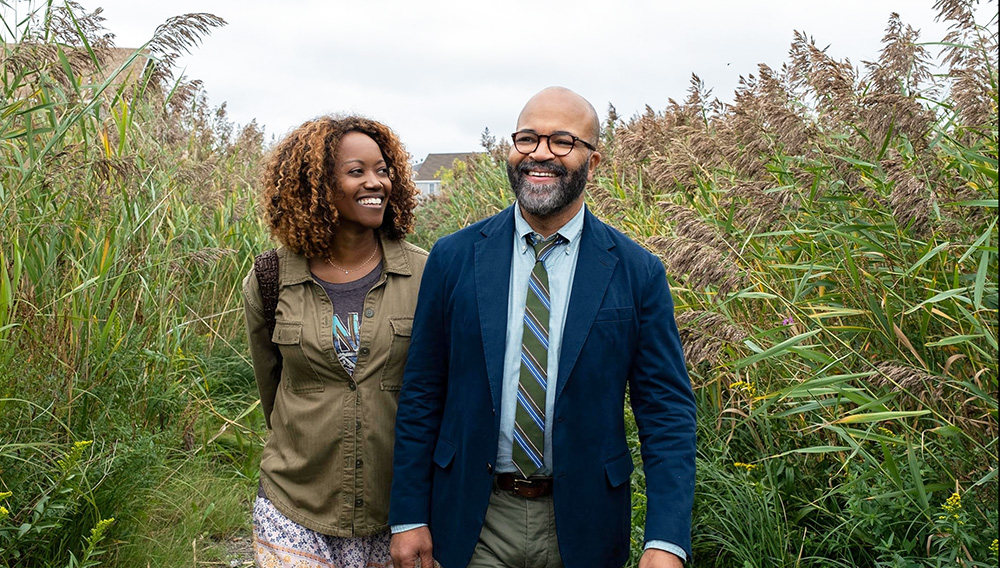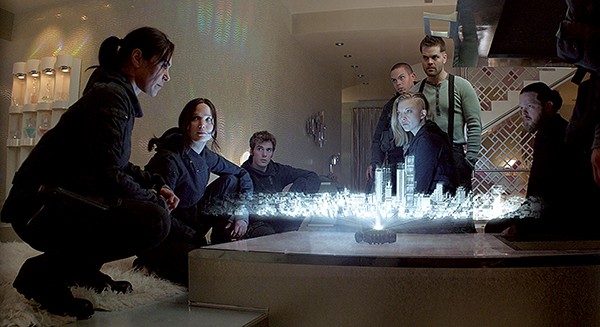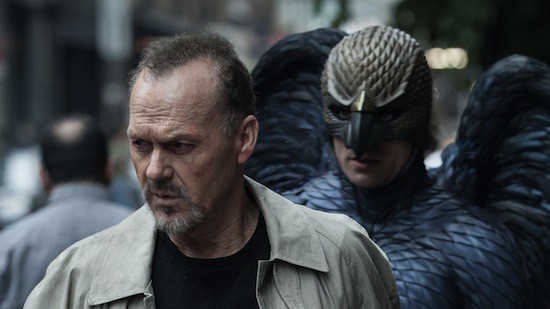When the curtain rises on Indie Memphis 2023 at Crosstown Theater on Tuesday, October 24th, it will be into a film world in chaos. For the art of cinema, it’s the best of times. The financial success of films like Everything Everywhere All At Once, Barbie, and Oppenheimer have proven that audiences are hungry for original ideas after decades dominated by corporate blandness. For the film business, it’s the worst of times. Tensions within the increasingly consolidated industry came to a head this year with twin strikes against the studios by the Writers Guild of America (WGA) and the Screen Actors Guild (SAG/AFTRA).
Like the old saying goes, the problem with the art of film is that it’s a business, and the problem with the film business is that it’s an art. In a world where so much film discourse is devoted to the business end, Indie Memphis artistic director Miriam Bale’s job is to foreground the art. “A lot of what we do as programmers is to try to have something for everyone, but also be really selective, so that no matter what you go see, you’re gonna have a good experience,” she says. “We’ve always tried to keep those very DIY, slightly weird, funny, and bizarre films that are so important to our identity. But in the last few years, we’ve expanded to have a lot of bigger titles and more international titles — the whole art house and beyond.”
One of the highest profile films screening at this year’s festival is American Fiction (Oct. 26th, 5:30 p.m.). Jeffrey Wright stars as Monk, a frustrated novelist who tries to expose the shallow stereotypes embedded in media by writing a satirically bad book that leans heavily on tired Black tropes. But instead of exposing the publishing industry’s hypocrisy, Monk finds himself perpetuating it when the book becomes a bestseller. Cord Jefferson, who won a writing Emmy for HBO’s Watchmen, makes his directorial debut adapting Percival Everett’s novel Erasure. “A piece of art has never resonated with me so deeply,” he says.
He says Network and Hollywood Shuffle were his inspirations as he tried to set the perfect tone for this difficult material. “I don’t want this movie to feel like we’re scolding anybody,” he says. “I wanted to make sure the satire never traveled into farce. I wanted it to feel authentic to real life.”

Among the other hotly anticipated films is Todd Haynes’ May December, starring Julianne Moore, Charles Melton, and Natalie Portman, whose performance is already attracting Oscar buzz. Italian filmmaker Alice Rohrwacher’s La Chimera (Oct. 28th, 5:50 p.m.) is a comedy/drama about a hapless English archeologist who falls in with a crew of unscrupulous grave robbers. “Those are two of the best films I’ve seen all year,” says Bale.
One of the festival’s goals, Bale says, is “redefining prestige. We do that with some of the new films we play, but we also do that with some of the older films we play.”
When deciding how to celebrate the 50th anniversary of hip-hop, Bale says, “I’ve noticed a lot of organizations are showing the classic documentaries on hip-hop. We wanted to find a different way to mark this important anniversary. Two just absolute bangers are Friday and Belly.”

One of the GOAT stoner comedies, F. Gary Gray’s Friday (Oct. 27th, 6:20 p.m.) launched Ice Cube’s film career. Belly (Oct. 27th, 10:30 p.m.), by music video legend Hype Williams, features Nas, DMX, and Method Man as New York gangbangers expanding their empire. “What’s interesting about those films is that they influenced indie film, but they were both by music video directors before they got big, and they’re starring rappers.”
“We’re always evolving,” says Bale. “I’m always listening to feedback. After the pandemic, we had a lot of heavy films. So this year we’ve leaned more to the comedy.”
The festival is truly redefining prestige with a tribute to the Wayans Brothers, including White Chicks (Oct. 28th, 6:10 p.m.) and Keenen Ivory Wayans’ 1988 Blaxploitation romp I’m Gonna Git You Sucka (Oct. 29th, 4:45 p.m.), which Indie Memphis executive director Kimel Fryer says is her mother’s favorite movie. “I am a huge Wayans fan,” Fryer says. “I don’t know if anyone knows that about me. I have literally seen every Wayans movie, good, bad, or ugly.”
Bale’s mother recently passed away, and in tribute to her on what would have been her birthday, the final film of the festival will be one of her favorites: Joe Versus The Volcano (Oct. 29th, 9:30 p.m.), the 1990 cult surrealist comedy starring Tom Hanks and Meg Ryan (in three roles).
It’s a perfect fit for Indie Memphis’ eclectic spirit. For 26 years, it’s been the only place in Memphis where you can see unique films like Czech director Vojtěch Jasný’s film The Cassandra Cat (Oct. 29th, 11:15 a.m.). “It’s about a cat with sunglasses, who takes off his sunglasses and literally sees people’s true colors,” says Bale. “If that doesn’t sell you, I don’t know what will.”
All Dirt Roads Taste of Salt
The opening night film has a special connection to Indie Memphis. Writer/director Raven Jackson was the recipient of Indie Memphis’ 2019 Black Filmmaker Residency for Screenwriting.
Originally from Tennessee, Jackson lived in Memphis for two months while finishing her screenplay, All Dirt Roads Taste of Salt. Academy Award-winning filmmaker and Indie Memphis alum Barry Jenkins judged the applicants that year, and once Jackson was finished, he took her under the wing of his production company Pastel. “We do a lot of things at Indie Memphis, but to watch a film go from seed to this incredible flower has been just so rewarding,” says Bale.
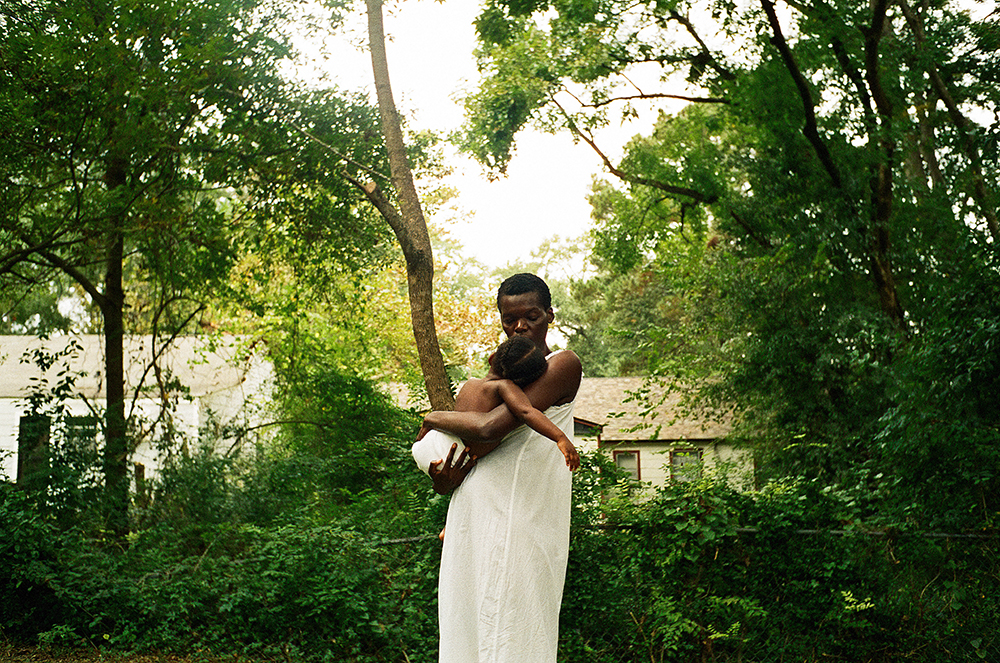
“The way that everything came together is really beautiful,” says Fryer, who saw the film at its Park City, Utah, premiere. “I’m at Sundance for the first time ever, and I’m a first-time executive director from Memphis. I’m completely out of my element. I walk in, I watch this film, and I felt like I was back at my grandma’s house. … I have never seen rural America portrayed as beautifully as this, especially with Black people at the helm. It brought tears to my eyes.”
The film tells the life story of Mack, a young Black woman who grows up in 1960s Mississippi. Jackson uses long, meticulously composed shots to take the viewer inside Mack’s memories of love, loss, and connection. “Some films you watch, right? But some films you experience,” says Fryer.
Jackson and her cinematographer Jomo Fray will be in attendance for opening night on Tuesday, Oct. 24th, at 6:30 p.m. Then on Wednesday, the pair will be at Playhouse on the Square for an in-depth discussion about the film and their process. “The [Terrence] Malik comparisons have come up, but really, I feel like it’s doing something different,” says Bale. “People are having such emotional responses. She made something kind of new, and I can’t think of anything more exciting than to witness the birth of it.”
Thank You Very Much
As I watched Alex Braverman’s fantastic new portrait of comedian Andy Kaufman, Thank You Very Much (Oct. 29th, 2 p.m.), the word I kept writing in my notebook was “deconstructed.” Kaufman took apart stand-up comedy, TV variety shows, professional wrestling, and even human behavior itself, and then reconstructed something new (and often disturbing) out of the pieces. It’s a tribute to Kaufman’s commitment to the bit that when he died in 1984 at age 35, many people believed it was yet another put-on. “It is a daunting, overwhelming subject matter to try to tackle,” says Braverman, who self-identifies as a Kaufman superfan. “But what could be more fun?”
Braverman managed to get unparalleled access to Kaufman’s best friend and writing partner Bob Zmuda and his girlfriend Lynn Margulies. “We were lucky enough to catch them at a time when they had spent decades having a lot of fun with the legacy, but now they really just wanted to tell the true story as best they could. … Bob in particular has access to a lot of material, some of which people are familiar with and some of which people haven’t seen before. A lot of that material’s in the movie.”
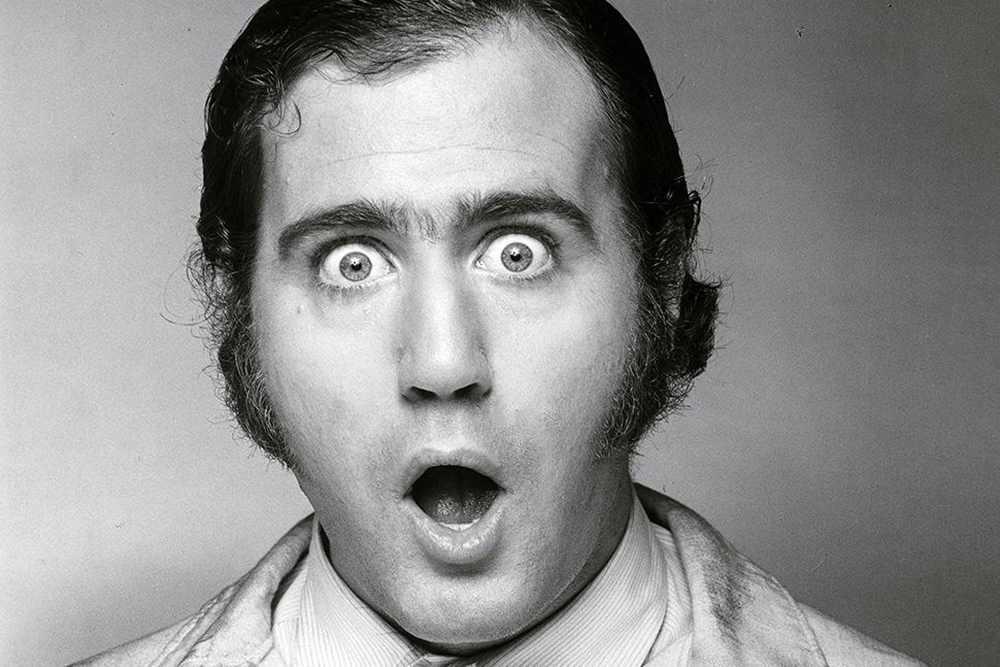
Kaufman denied he was a comedian (he claimed to be a “song and dance man”), and many have suggested he was a performance artist. This notion is reinforced by some of the rarest film the documentary uncovered: a faked, onstage confrontation between Kaufman and Laurie Anderson. “I think they just saw in each other some sort of connection or kindred spirits,” says Braverman. “I don’t think that term ‘performance artist’ was really in his mind at the time, but he was coming from a discipline that was more about creating an experience for people and getting them to react to what he was doing, more than it was about, ‘How do I be funny?’”
Anderson and Kaufman’s bit presaged Kaufman’s obsession with professional wrestling, which would eventually land him in a ring in Memphis with Jerry Lawler. “There’s some spiritual connection between Andy and Memphis,” says Braverman, pointing out that Kaufman wowed with a dead-on Elvis impression on the first episode of Saturday Night Live. “As far as the wrestling connection goes, he was really ahead of his time, in a way, as far as understanding how we like our entertainment in this country. It’s good-versus-evil, extreme showmanship at all costs.”
I Am
“The quality of the Hometowner Features is growing every year, so the selection process gets harder,” says Bale. “The films this year are very strong, but also so diverse, with documentaries and comedies and horror.”
This year’s Indie Memphis presents eight feature-length films made in Memphis. Princeton James’ psychological thriller, Queen Rising (Oct. 26th, 9 p.m.), and George Tillman’s documentary about Club Paradise, The Birth of Soul Music (Oct. 28th, 10:30 a.m.), are screening out of competition, while six films will compete in the juried Hometowner category: Lee Hirsch’s vérité documentary about Crosstown High, The First Class (Oct. 27th, 7:30 p.m.); Jaron Lockridge’s voodoo horror, The Reaper Man (Oct. 25th, 9 p.m.); Alicia Ester’s historical essay, Spirit of Memphis (Oct. 28th, 3 p.m.); Joann Self Selvidge and Sarah Fleming’s sweeping issue doc, Juvenile: 5 Stories (Oct. 27th, 6 p.m.); Sissy Denkova’s Bulgarian immigrant comedy, Scent of Linden (Oct. 29th, 12 p.m.); and Jessica Chaney’s testimonial mental health documentary, I Am (Oct. 25th, 8:30 p.m.).
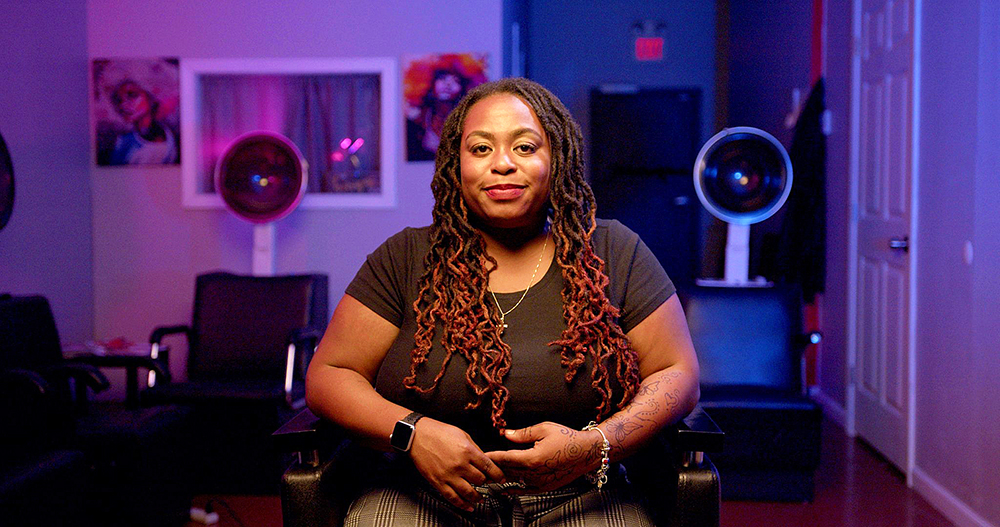
Chaney says I Am began when she was diagnosed with generalized anxiety disorder just before the 2020 pandemic. Her therapy regimen caused her to “seek community for people who are going through the same thing, and understanding that you’re not alone in your feelings and what you’re experiencing. I think the worst thing for anything that you’re going through — whether it be physical, medical, mental, whatever — is to isolate yourself.”
Chaney enlisted Amanda Willoughby, her co-worker at Cloud901, as producer. Their proposal for a short film won a competitive $15,000 Indie Grant at Indie Memphis 2021. But as they shot, it became clear they had a feature length film. “We were surprised by how good every interview went,” says Chaney. “We got so much more than we anticipated, sat with every woman much longer than we anticipated.”
“Jessica was still gung-ho on this being a short, and I was like, ‘Jessica, I’m the editor. It’s all going to fall on me. We don’t have to pay anybody. We got so much stuff. Let me do this!’” says Willoughby. “It took some arm pulling, but she was like, ‘Okay, I trust you.’ And I’ve lived with that hard drive. It goes everywhere with me because I have constantly put so much work into it.”
Willoughby says collaborations with Crystal DeBerry, life coach Jacqueline Oselen, and composer Ashley K. Davis made the film stronger and reinforced one of its most important messages. “I’ll just say I learned that there are a lot more people that want to help you than you think.”
“We’re presenting these stories from these women, and it’s not all gloom and doom,” says Chaney. “There’s hope. Every last woman gives hope.”
Donna and Ally
Street-level, DIY comedies, made with little more than a camera and determination, have been a staple of Indie Memphis since the very beginning. It’s the perfect festival for the world premiere of Donna and Ally (Oct. 27th, 6 p.m.). The film follows the titular pair of best friends as they try to make their way through the Oakland, California, underworld as sex workers. Donna’s got a legendary bad temper, which is attractive to a certain kind of client. The problem is, Donna’s mean streak is the result of premenstrual dysphoria disorder, which writer/director Cousin Shy describes as “PMS on steroids,” so she’s only good as a dom for a couple of weeks a month.
Shy says the film is inspired by real life. “I spent some time growing up in the [foster care] system, and a lot of those kids were bigger than life, just really fun. They’re geniuses in their own way. I found one of the leads, Ally—her name is Qing Qi online—and she just has this bigger-than-life presence.”

Shy is a Bay Area native who has both worked for Apple and as a first responder. “I worked on an ambulance, and that actually was some inspiration for Donna and Ally,” she says.
When we first meet the pair, they run away from a Catholic foster care home to avoid being locked up on a 5150. “Regardless of where they are in life, and what they go through in their trials, they love each other, and they’re on this journey. You really don’t even see how that’s affecting them in the movie because I think it’s just their life, and they’re laser-focused on becoming somebodies and having that happy ending. So, it’s a comedy.”
Donna and Ally’s obsession with social media stardom leads them to ridiculous circumstances. “A lot of kids, especially kids from the underclass, are just like, ‘I feel like I’m somebody, but I was born a nobody, and I want to make it.’ What are the options to make it that are not the traditional routes? For some kids from the underclass, it doesn’t feel like that’s their route, going to university, going through the systems that they felt have failed them before. And so what are the alternatives? It’s social media. You see kids who are getting famous and being seen on social media. And so that was a huge part of the movie — just getting those viewers on Instagram and building an audience that can see you. You have a thousand views and you feel like you’re Beyoncé! … We wanted to take the characters very seriously, just as serious as they took themselves. We wanted it to be really raw. It’s very normal to them. There’s no shame in anything they do.”
The 26th annual Indie Memphis Film Festival runs October 24th through 29th, with films screening at Crosstown Theater, Playhouse on the Square, Circuit Playhouse, and Malco Studio on the Square. The complete schedule, passes, and tickets to individual movies are available at indiememphis.org. For continuing coverage of the festival, go to memphisflyer.com.
